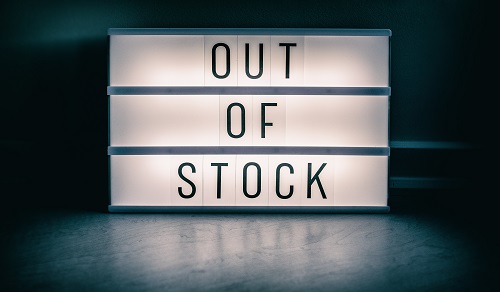By E.V. Clarke, CEO and Founding Partner of Health Products Xchange
September 17, 2021 – With medical supply shortages quickly shifting from PPE to many other categories, the healthcare supply chain remains fragile a year and a half into the pandemic. Medical supplies on backorder from a primary supplier are a familiar experience to anyone in healthcare purchasing. But how can the same product be readily available through other suppliers? Is the primary supplier failing in its duty to deliver?

These concerns were echoed recently at the AHRMM21 Conference & Exhibition discussion about experiences during COVID-19. While this perception is understandable, the issue is much more complex.
During supply disruptions, speculation and shortage fears replace actual demand in purchasing patterns. Panic buying from a few stockpiling customers can deplete a supplier, while another supplier could be sitting on surplus inventory. Additionally, manufacturers often allocate products using historical usage data that has no relationship to pandemic-driven demand. This can imbalance product availability from supplier to supplier.
It addresses the quandary discussed in a recent Senate hearing on Coronavirus Preparedness and Response, highlighting the significant amount of supply that was available but not visible to those in need during the pandemic crisis.
It also explains why diversifying sources of supply ranks as the top strategy for many supply chain professionals in and out of healthcare. The recent pandemic surge and the global logistics crisis creates unique urgency for the healthcare industry as we approach flu season.
There are significant barriers and costs to expanding the supplier base. Primary supplier agreements require a high compliance level, including financial incentives, that must be weighed against adding additional suppliers. Arranging and managing backup suppliers also demands a labor-intensive investment.
These issues aren’t unique to healthcare; they span across most business sectors that are rapidly adopting B2B digital marketplace solutions to gain access to multiple supply sources from a single platform. Digital Commerce 360, a leading e-commerce research firm, states that B2B marketplaces are the fastest growing sector of e-commerce.

A B2B digital marketplace doesn’t replace the primary supplier but fills a gap by allowing businesses to meet their purchase obligations with the primary supply source while expanding visibility to backup sources of supply through a single vendor. This efficiently maximizes access to supply and streamlines the resource requirements for vendor management.
As an example, Health Products Xchange (HPX), a B2B healthcare digital marketplace, allows providers to source backorders simply by uploading them. HPX then broadcasts the lists to credentialed suppliers and providers with the inventory to fill these backordered items. HPX emails the provider once a source with an available product has been identified.
To learn more, visit HPXConnect.com.
E.V. Clarke is a 30-year veteran of the healthcare products industry. He has built market-leading positions for Fortune 300 companies as a highly successful senior executive drawing on a wealth of diverse career experiences, including leadership roles at McKesson Medical-Surgical, Henry Schein Medical and Owens & Minor. E.V. founded HPX to maximize visibility and create access to credible sources of medical supplies.
